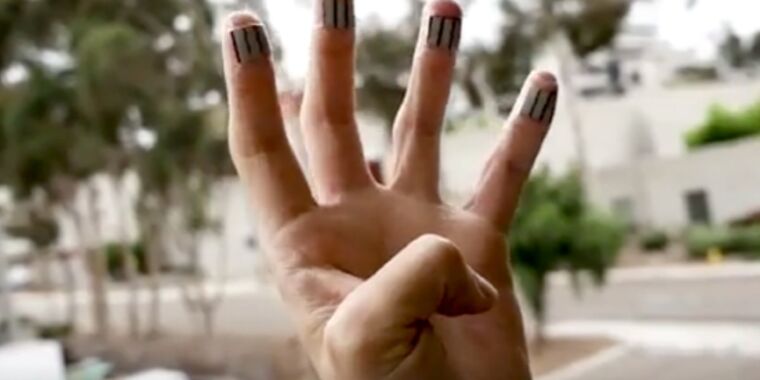“Even with the minute amount of sweat compared to the sweat you got from a really intense workout, this power is still very sizable,” co-author Lu Yin told New Scientist. “No matter how clean your hand is, it’s very easy to leave your fingerprint everywhere. That’s basically the residue of your sweat, with a lot of metabolites. What we did is to take advantage of this.”
The new UCSD biofuel cell is a thin, flexible strip that wraps easily around the fingertip like a Band-Aid. There is a pad of electrodes made out of carbon foam and a hydrogel that absorbs any sweat. Enzymes in the electrodes then trigger chemical reactions between the lactate and oxygen molecules in the sweat to produce electricity. The researchers next added a piezoelectric chip so that even more energy could be produced just by pressing one's fingertips against an object. That energy is then stored in a small capacitor until it is needed.
The UCSD team found that their biofuel cell could produce nearly 400 millijoules of energy per square centimeter (sufficient to power an electric wristwatch for 24 hours) as a test subject slept for ten hours. An hour of light typing or clicking on a mouse produced nearly 30 millijoules from a single fingertip. Adding strips to the rest of the fingers could potentially produce ten times more energy, making for a great return on energy investment. "When you are sleeping, you are putting in no work," said Yin. "Even with a single finger press, you are only investing about half a millijoule.”
Not sure what sort of electric wristwatch they're thinking of, but don't think that is today's WearOS and WatchOS powered devices. It is probably early days for this, but I can see if powering small dedicated sensors and in future slightly bigger devices.
See
Finger wrap could one day let you power up wearables while you sleep#
technology #
biohacking #
energy #
wearables #
bioenergy
This thin, flexible strip generates small amounts of electricity from finger sweat.
